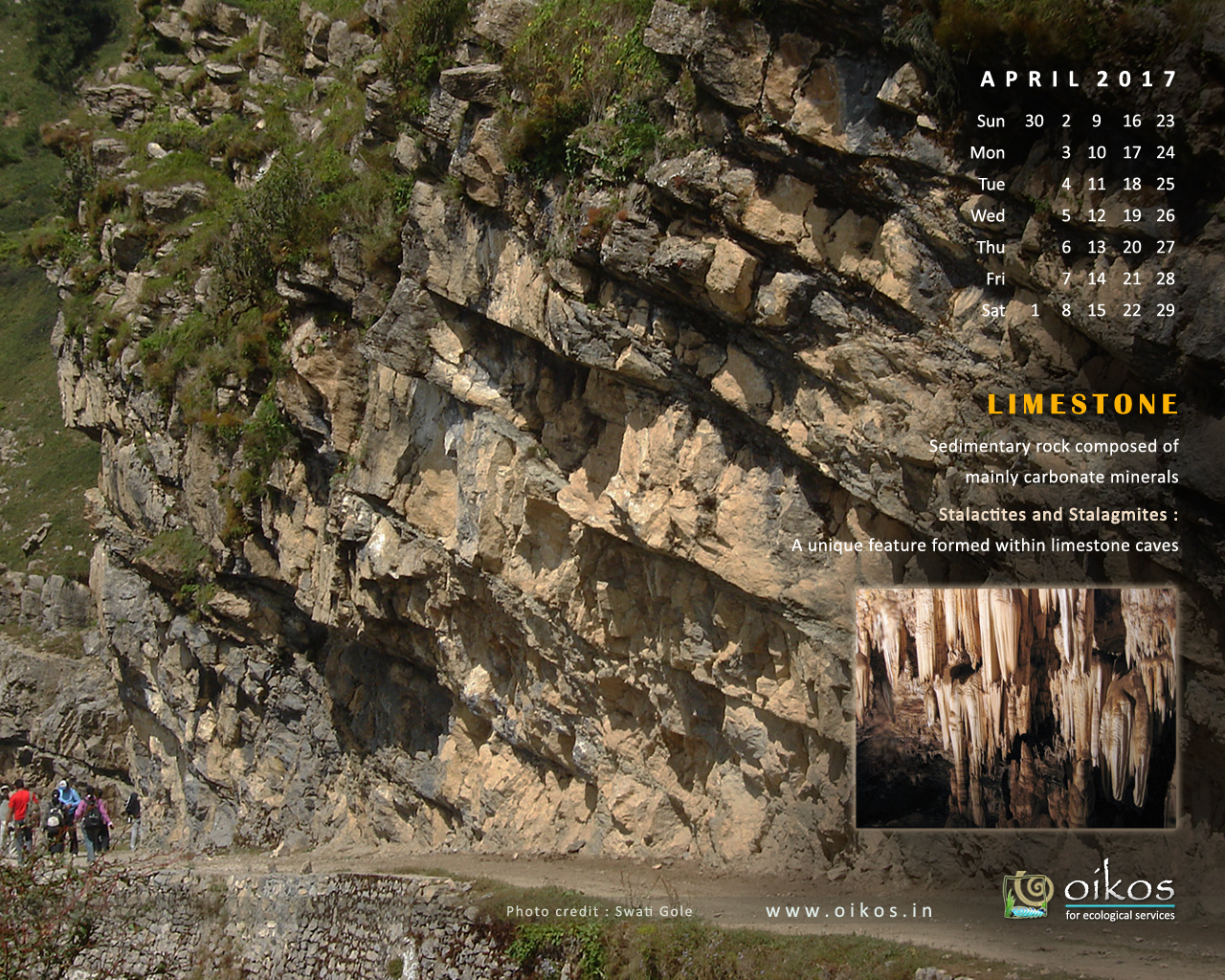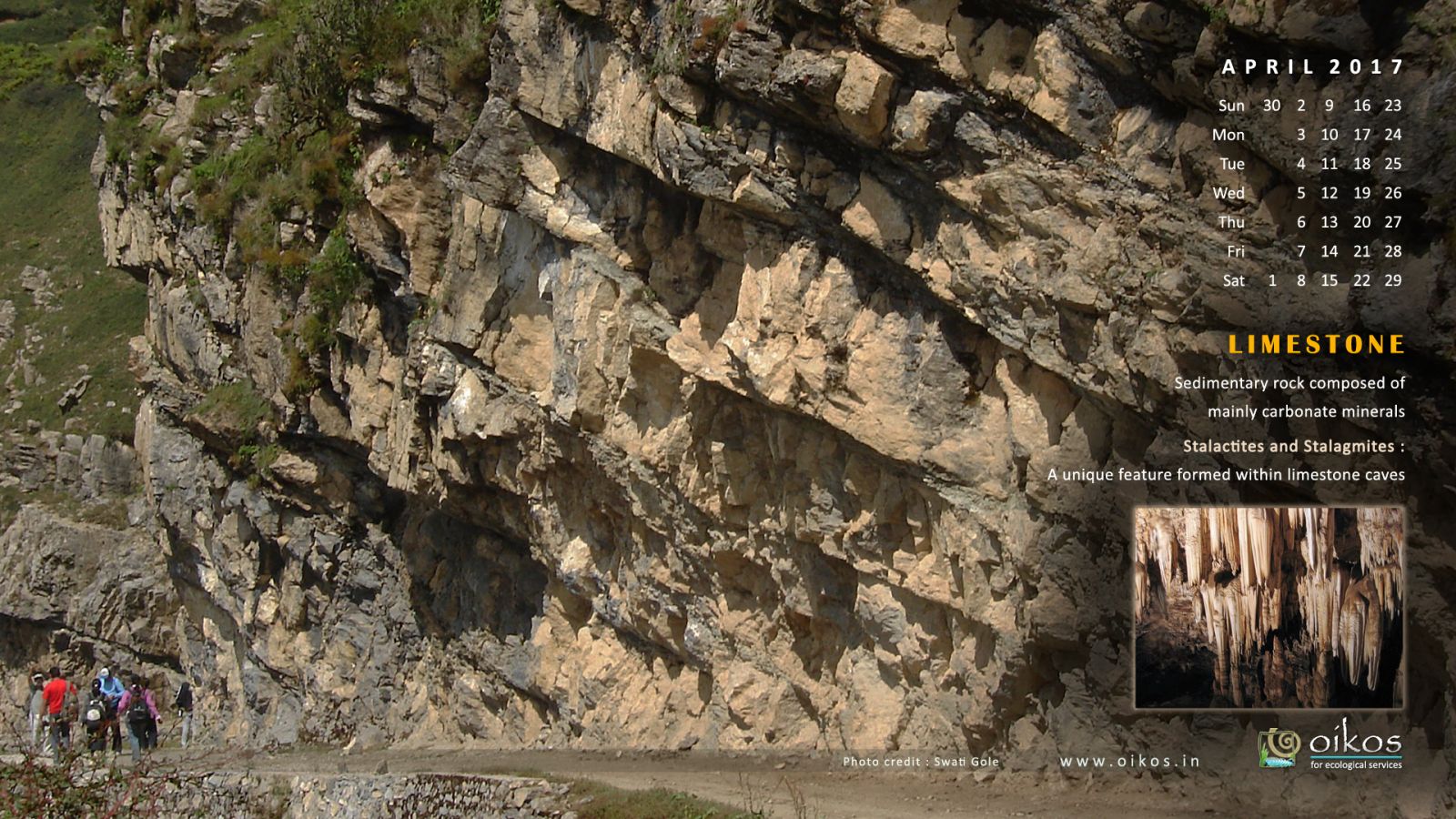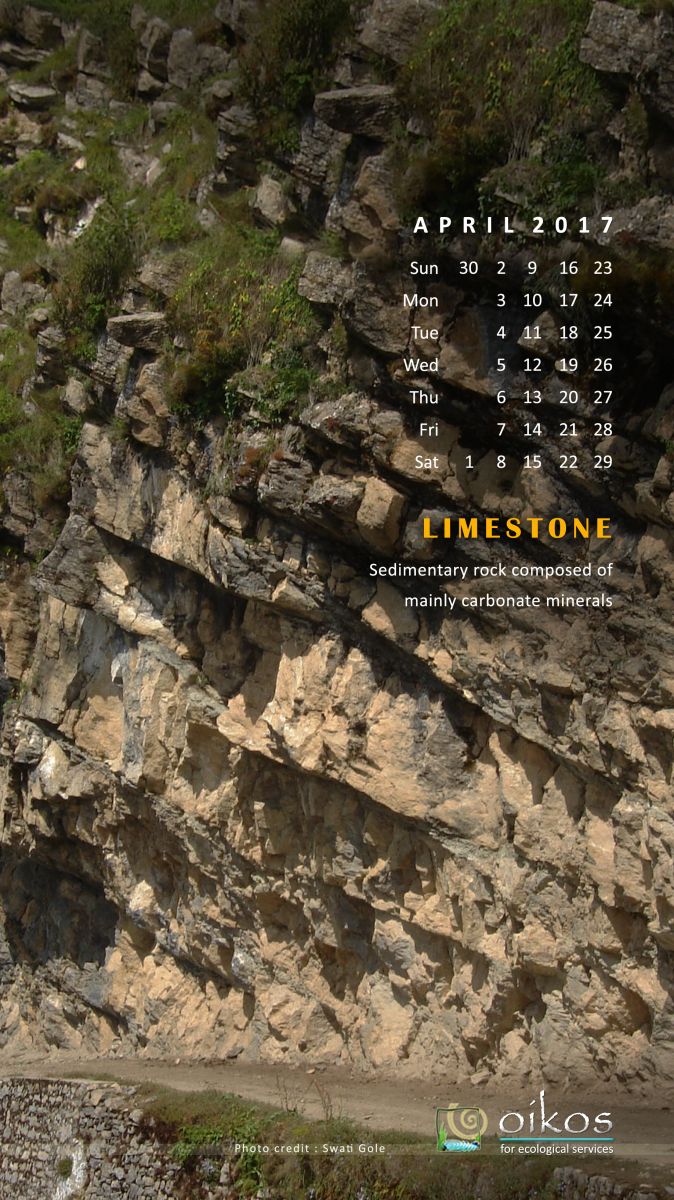Apr - 2017
Dear nature lovers,
Greetings from oikos !
Limestone is a sedimentary rock composed of carbonate minerals, mainly CaCO3.
It is secondary and transported in solution, chemical deposit or bio-chemical deposit.
Chemically deposited limestone from India includes Kota, Tandur, Cudappah, Shahabad, which are named after the location where it is found abundant. Kota is from Rajasthan. Tandur are from Telangana, Cudappah from Andhra and Shahabad from Gulberga, Karnataka.
Bio-chemically deposited limestone is mostly granular. Most grains in limestone are skeletal fragments of marine organisms such as corals, shells and many others. These organisms secrete shells made of aragonite or calcite, and leave these shells behind when they die. Depending on the material and time period of its composition they are named as shell limestone or fossiliferous limestone. The one found in District Raigad is locally named as करळ(Karal). Dating of this limestone is useful in digging out the history or anticipating earlier sea levels. Cement industry is mostly based on this fossiliferous limestone area, which is in a way a great threat, being a great source to study fossils and prehistory.
Limestone caves:
Solubility of limestone in water and weak acid solutions leads to formation of a special type of landscape known as Karst Topography and Limestone caves. This landscape is also formed in dolomite and gypsum rocks. Karst is characterized by underground drainage systems with sinkholes and caves. Sink hole is a feature on surface from where water seeps underground through channels and forms caves with unique formations known as Stalagmites and Stalactites. Stalagmites is a type of rock formation that rises from the floor of a cave due to the accumulation of material deposited on the floor from ceiling drippings. Stalactite is a type of formation that hangs from the ceiling of caves. Many times both these fuse to form column. Also many other shapes and features are formed within these caves. These get formed over a geological time period. So are very important feature and need to be preserved.
Uses: Main raw material in cement industry. It is added to toothpaste, paper, plastics, paint, tiles, and other materials as both white pigment and a cheap filler. Carbonate rocks are one of the important sources for petroleum deposits.
Regards,
Ketaki & Manasi
* Thanks to Geologist Dr Ajit Vartak for all help in providing information.
Please Note -
This Email is a part of awareness campaign initiated by oikos, Pune. Write to us for your valuable feedback.
oikos have been sending ‘Desktop calendars’ since January ’06 with various themes, which can be downloaded from our website.
If you are not willing or not the correct recipient of this Email, kindly reply this mail with subject 'unsubscribe'.
Thanking you for your precious time.
Spread a word !!Forward to nature lovers !
Click on any of the desired options below to get appropriate image.
Save it to computer and set it as desktop background for your computer monitor.
Oikos for ecological services
Ph. 020-25451875
Web: www.oikos.in





